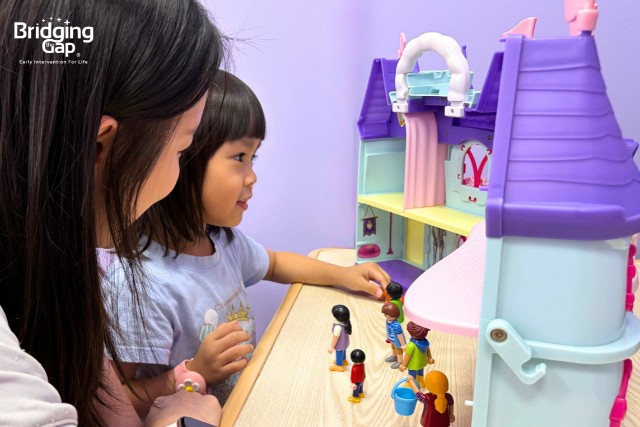Giving children an allowance can be a good means to build good financial habits. But how much allowance is sufficient? TNAP speaks to Ernest Tan, Founder and Managing Director of Jopez Academy, and author of ‘Raising Financially Savvy Kids‘ to learn more.

How Much Allowance Should Kids Get?
- Practical considerations when giving allowance
There is no exact amount that is right or wrong. The general rule of thumb would be $2-3 per day for a Primary 1 child, making that up to $10-15 per week. This will be inclusive of recess and savings. This can be increased by $0.50-$0.70 per day as your child grows older. There are various factors to consider how much to give to your child: lifestyle, the school your children are going to and their time spent in school. Are they staying back for the whole day? Do they need meals after school? Their allowance amount should be adjusted based on costs as well.
- Observe your child’s capacity to manage
The allowance to be given is not so much about a fixed amount to follow. Besides doling out daily or weekly amounts to your child, observe and know how the money is being handled. On one hand, the money is left up to the child to manage. But parents need to know how their children are managing their allowance and provide guidance when necessary.
Important things to look out for: Is the child able to proportion out what is used for expenses and savings? Is the child saving too much and skimping on the necessary things? Is the child extravagant? Spending on non-essentials?
- The Money Management Flow
Should children spend first and save whatever is left or should children save first and then spend? What is the correct sequence – what if there is nothing left to save? What about giving to others?
It is essential to teach your children a basic money management system upon receiving their first allowance from you. Automate what they do with their allowance (incoming) and expenditure (outgoing). Allowance can be separated into 3 jars or components – spending, saving and sharing. Agree on the allocation guideline with your child.
Expert’s tip: According to Ernest, who is a Certified Financial Planner and Money Coach, his guide is 70% goes to spending, 20% goes to savings and 10% goes to sharing. It’s also better to give your allowance in loose change so that money can be easily divided and allocated to each jar.
⇒ Related Read: Getting Kids Started On Money Management
- Incorporate the spirit of giving and sharing

Money can be used to teach life values. Establish the correct mindset from the get-go. Is allowance an entitlement or privilege? With the sharing jar, parents can teach their children how to give and share with money. Giving is about generosity and gratitude. It also builds a sense of thankfulness and charity.
⇒ Related Read: Ways To Teach Your Children The Spirit Of Giving
- Should you give in when your child asks for more allowance?
Understand the context before saying ‘yes’ or ‘no’. Why was the allowance money maxed out? Was it for food, a new game, or stationary for school? Parents need to let children learn the consequences of poor financial habits and help them understand that money is a limited resource. As adults, can we ask our companies for salary advancement when we misuse our salary, or if we need to put down payment for that new car?
Saving instills patience and responsibility to accrue money to purchase something. But when a child banks most of their allowance into savings and does not have enough to spend, the solution is not to give more money but to teach about planning. Certainly, there are situations where the allowance given may be insufficient due to additional expenses and rising costs. Discuss them with your child before coming to a conclusion.
- Should you pay for housework chores done at home?
Paying for doing housework is not uncommon. Parents need to tread carefully on this. Children cannot be expected to be paid for every single thing they do or help around at home. They are part of the family and contributions to the family and home should not be tied in with monetary value.
⇒ Related Read: 6 Ways To Get Kids To Clean Up On Their Own
Expert’s tip: Different age groups can do different tasks for the family. For age-appropriate and basic tasks, these do not need to be paid as the children are doing their part as family members to give back to the family (i.e. tucking in their own bed, cleaning up after themselves). However, if they do higher tasks beyond their scope, parents can opt to pay for these as an incentive to build habits. Such tasks can be discussed between parent and child.
Another practical way that children can ‘earn’ aside from housework could be helping parents to save. For example, children can help by keeping a look out for special discounts, coupons or promotions that will help defray the expenses at home. A portion of what was saved because of their effort can then be given to the child. This helps them to look out for ways to save in a relevant way for the family.
The key to teaching your children good financial habits and allowance management are: regular discussions and consistent application. As your children get older, the lessons they learn can be built with more advanced financial principles.
⇒ Related Read: 3 Important Things To Consider Before You Invest
By Som Yew Ya.
This was first published in The New Age Parents e-magazine.
* * * * *
Like what you see here? Get parenting tips and stories straight to your inbox! Join our mailing list here.
Want to be heard 👂 and seen 👀 by over 100,000 parents in Singapore? We can help! Leave your contact here and we’ll be in touch.



























































